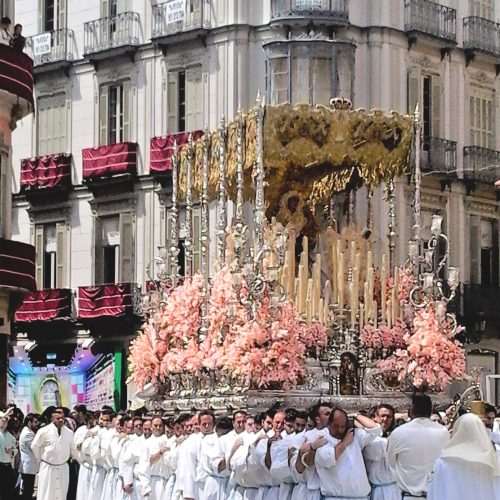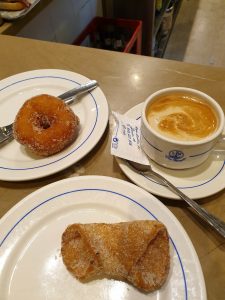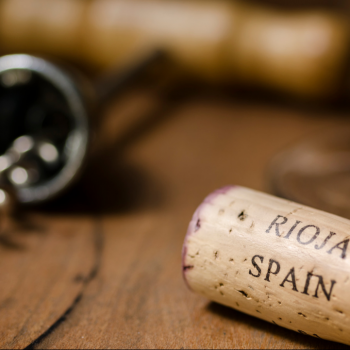
Domingo de Resurrección in Spain
 What is Domingo de Resurrección?
What is Domingo de Resurrección?
Literally meaning ‘Resurrection Sunday,’ Domingo de Resurrección is what you may have grown up referring to as simply ‘Easter’ or ‘Easter Sunday.’ Keep in mind that, although your Spanish-English dictionary may suggest the term ‘Pascua’ as the translation for Easter this is a more formal term than most Spaniards use in practice and so it’s much more natural to refer to the period leading up to Easter Sunday as Semana Santa and Easter Sunday itself as Domingo de Resurrección.
For those who are not familiar with this Christian celebration, Easter Sunday is known as the day of resurrection as Jesus Christ is believed to have been tortured and crucified on Good Friday (known as Viernes Santo in Spanish) but to have risen from the dead on the third day, Easter Sunday.
As we’ve mentioned previously, Semana Santa in general is a beautiful time to take in the culture and traditions of Spain but be aware of how these celebrations will affect you if you plan to be traveling (and especially if you plan to catch a train or flight on one of the most important days). Please read up on our tips for traveling during this holiday if you have not already!
How do they celebrate?
As we outlined when talking about the days of Semana Santa, there is a story or theme that each day of Semana Santa commemorates and many of the days leading up to Easter—specifically late Thursday night through Saturday—are somber occasions. This is because at this time in the week, Jesus had already been betrayed by Judas and was preparing to sacrifice himself for the sake of humanity. It is common for Spanish churches to tie their bells on Holy Thursday and to not let them ring again until the day of resurrection. Although Viernes Santo is one of the most important days of the week in terms of processions they are often dark, mournful moments and it is not uncommon for it to rain on this day, which is known as the day of Jesus’s crucifixion.
Come Domingo de Resurrección, however, the ambiance completely changes and the streets are filled with joyous music, flower-covered pasos (heavy ‘floats’ carried on people’s shoulders), and overall celebration and indulgence in good food and great company. Traditionally, most Spaniards will take this time to travel home if they live elsewhere or visit extended family in other places. Families will celebrate the glorious Easter Day by attending processions, making or purchasing tasty traditional Easter sweets, and/or sitting down to an Easter feast. Of course, it is also a good time to travel as most people will have at least a few days off at this time of the year so the popularity of this option has grown greatly over the years.
Pro-Tip: If you would like to hear about more about Semana Santa from a Spaniard’s perspective, please check out the interview we did with one Spanish friend of ours about what this week means to her.
What should you do if you are here?

If it’s your first time in Spain for Easter, we highly recommend you stick around and experience this one-of-a-kind celebration. As a student or teacher, it’s tempting to spend this long stretch of time off traveling internationally but, if you can, try to accommodate coming home a day or two early to experience Domingo de Resurrección. While some of the other days of Semana Santa may be harder for you to appreciate if you are not particularly drawn to the story of Jesus, Domingo de Resurrección is a happy day to be spent with family. If you have the opportunity to spend this time with a Spanish friend (and their family) this is the most authentic way to spend the holiday and you should not pass it up!
If you will be on your own and/or traveling in a different Spanish city there are still many ways you can partake in the traditions. Check online or at a local bar/restaurant to find out when the Resurrection Procession will take place. Unlike most other days of Semana Santa, it is common to have just one Easter Sunday procession and, while this one will still go on for hours, you don’t want to miss it. You can also enjoy some of the savory and sweet dishes of Domingo de Resurrección by ordering lamb (cordero) or paella for lunch.
Afterwards, stop into a bakery to purchase a mona de pascua, the traditional Easter cake, if you will be enjoying dessert with a group or a few pestiños or torrijas if individual-sized servings would be best. Pestiños are crispy, deep-fried fritters (shown in image) that are generally coated in sugar whereas torrijas are softer desserts similar to what you may think of as french toast. Leche frita, which literally translates to ‘fried milk’ is also a traditional dessert with a very unique consistency and deep flavor to try at this time of year.
¡Feliz Domingo de Resurrección!
Sincerely,
Spain





One Comment
Pingback: